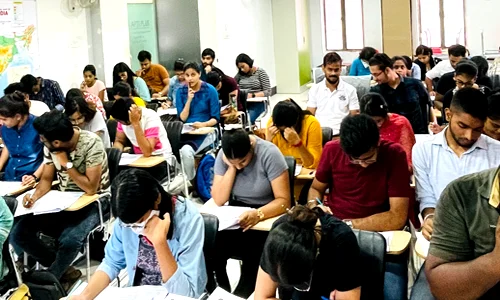



The Government of India proposes a special cess on goods like pan masala to create a non-lapsable fund for health and national security, linking public health with national stability. Critics warn it weakens fiscal federalism and risks poor fund use amid past evidence of unspent cess.
Click to View MoreThe WHO’s first guideline on GLP-1 therapy marks a major shift in treating obesity as a chronic disease rather than a behavioural issue. It conditionally recommends drugs like semaglutide and tirzepatide for adults with obesity, but only alongside diet, exercise, and counselling. While the therapy shows significant weight loss and metabolic benefits, WHO warns of high costs, limited access, safety gaps, and the need for strong health systems to ensure equitable, long-term care.
Click to View MoreFirst Indian study measuring inhalable microplastics at breathing height across four metros shows plastics now form up to 5% of urban particulate pollution. Markets in Kolkata and Delhi show highest loads. iMPs carry pathogens, heavy metals and toxic chemicals, posing emerging health risks including inflammation, hormonal disruption and possible cancer pathways. Urgent inclusion of microplastics in air-quality regulation is needed.
Click to View MoreThe Centre has introduced two Bills to raise excise duty on tobacco and impose a capacity-based cess on pan masala manufacturing, replacing the outgoing GST compensation cess. The move protects revenue, combats tax evasion, funds health and national security, and supports India’s ongoing tobacco control efforts.
Click to View MoreUN ESCAP’s 2025 report warns that Asian megacities may experience an additional 2–7°C due to urban heat island effects, with India, Pakistan and Bangladesh facing 300+ days above 35°C. Extreme heat is now the region’s fastest-growing climate hazard, threatening health, livelihoods and economic stability.
Click to View MoreThe world’s first human H5N5 bird flu death has been reported in Washington. While the virus poses low human risk, it remains a significant ecological and agricultural threat. No human-to-human transmission is detected, but scientists urge vigilant surveillance and One Health–based monitoring to prevent future spillover events.
Click to View MoreMalnutrition in India remains a pressing public health challenge, affecting children, pregnant women, and vulnerable populations, especially in tribal and remote areas. It manifests as undernutrition—including stunting, wasting, underweight, and micronutrient deficiencies—as well as the rising problem of overnutrition. Despite initiatives like POSHAN Abhiyaan, ICDS, Anemia Mukt Bharat, and food fortification programs, gaps in implementation, healthcare access, infrastructure, and community awareness persist. Evidence shows that targeted interventions in high-risk areas, maternal nutrition support, technology-enabled monitoring, and community engagement are critical to reducing malnutrition and improving overall health outcomes.
Click to View MoreIndia’s NAP-AMR 2.0 (2025–2029) adopts a One Health approach and, for the first time, assigns budgeted responsibilities to over 20 ministries. It strengthens governance, surveillance, infection control, and stewardship, but its success depends on funding, regulation of the unorganised sector, and behavioural change.
Click to View MoreIndia has reduced TB cases and deaths but will miss its 2025 elimination target. It still carries 25% of the global burden, worsened by drug resistance, malnutrition, funding gaps and private-sector under-reporting. COVID-19 setbacks make a stronger, multi-sectoral strategy with nutrition and private engagement essential.
Click to View MoreHepatitis A is a viral liver infection that spreads through contaminated food and water. While usually mild in children, it can be severe in older children and adults, sometimes leading to liver failure. Improved sanitation has reduced early childhood exposure, leaving many young people vulnerable. Safe and effective vaccines are available, including a single-dose option with long-lasting protection. Despite this, Hepatitis A is not yet part of India’s national immunisation program. Strengthening surveillance, promoting hygiene, improving water quality, and introducing phased vaccination can help prevent outbreaks and protect public health.
Click to View MoreWHO has opened a Pandemic Preparedness and Emergency Response site at AIIMS New Delhi to act as a regional hub. It will strengthen health security through training, simulations, capacity building, and better surveillance. The initiative supports faster responses to outbreaks and aligns India with WHO’s global preparedness strategy.
Click to View MoreScientists have discovered a special type of brain immune cell called microglia that can protect against Alzheimer’s disease by reducing inflammation and slowing the buildup of harmful proteins like amyloid plaques and tau. These cells work through molecules PU.1 and CD28, offering a potential new direction for treatment. Alzheimer’s, a progressive brain disorder causing memory and cognitive decline, is a growing public health challenge globally and in India. Governments are responding with awareness campaigns, healthcare policies, and research initiatives, but challenges like high costs, limited access, and early diagnosis remain. The discovery highlights the promise of combining scientific research, healthcare, and policy to combat Alzheimer’s disease.
Click to View More
© 2025 iasgyan. All right reserved